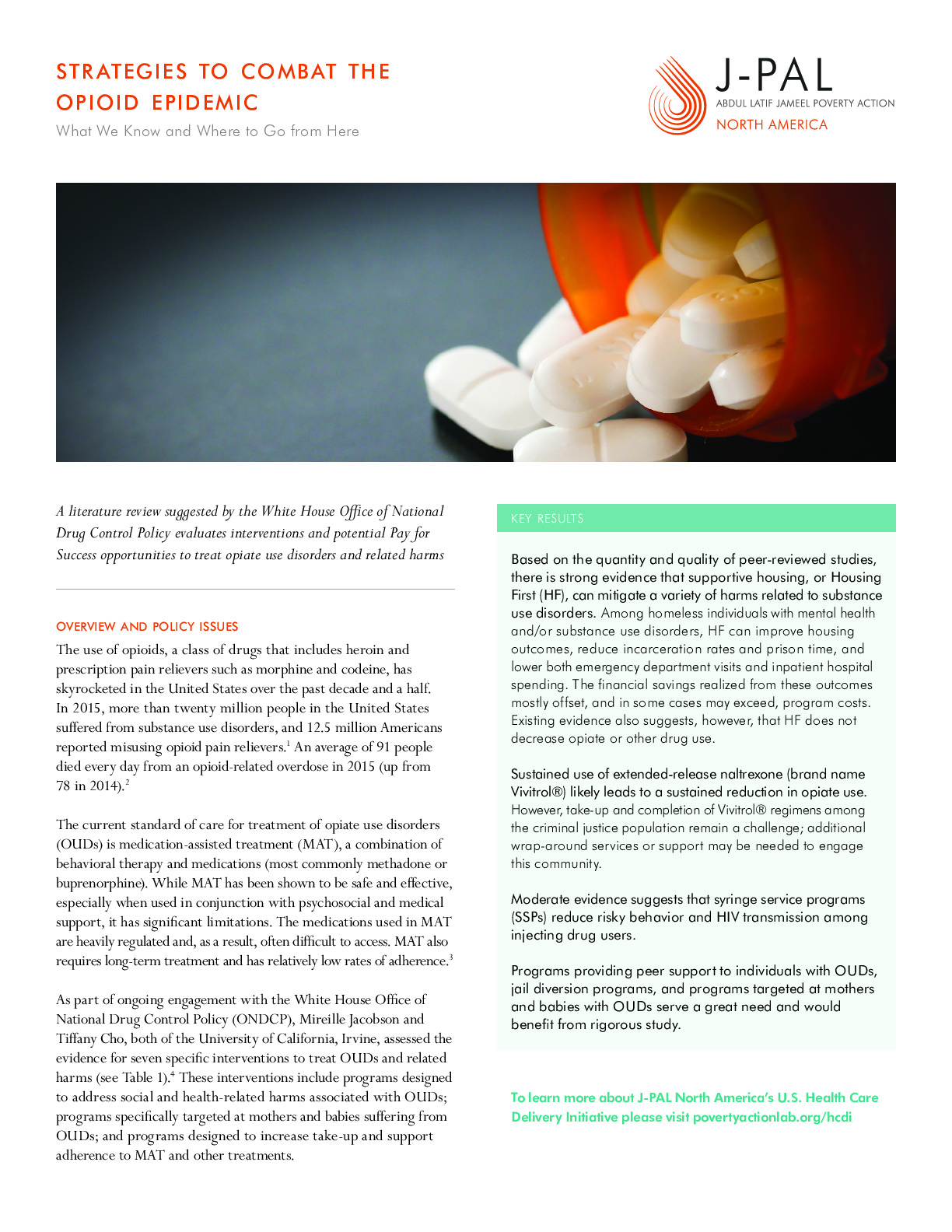Strategies to Combat the Opioid Epidemic
The use of opioids, a class of drugs that includes heroin and prescription pain relievers such as morphine and codeine, has skyrocketed in the United States over the past decade and a half. In 2015, more than twenty million people in the United States suffered from substance use disorders, and 12.5 million Americans reported misusing opioid pain relievers.1 An average of 91 people died every day from an opioid-related overdose in 2015 (up from 78 in 2014).2
The current standard of care for treatment of opiate use disorders (OUDs) is medication-assisted treatment (MAT), a combination of behavioral therapy and medications (most commonly methadone or buprenorphine). While MAT has been shown to be safe and effective, especially when used in conjunction with psychosocial and medical support, it has significant limitations. The medications used in MAT are heavily regulated and, as a result, often difficult to access. MAT also requires long-term treatment and has relatively low rates of adherence.3
As part of ongoing engagement with the White House Office of National Drug Control Policy (ONDCP), Mireille Jacobson and Tiffany Cho, both of the University of California, Irvine, assessed the evidence for seven specific interventions to treat OUDs and related harms. These interventions include programs designed to address social and health-related harms associated with OUDs; programs specifically targeted at mothers and babies suffering from OUDs; and programs designed to increase take-up and support adherence to MAT and other treatments.
